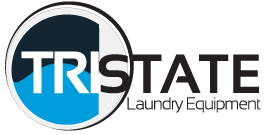I’ve worked on lots of boilers in my 30 years in this industry, so based on my experiences, I’ve come up with a list of the top six culprits, along with solutions, to low-water level issues.
- The return tank fill valve is stuck, preventing water from filling the return tank. Before doing any other trouble shooting, check the sight glass for proper level.
- Corroded or scaled low-water safety probes will keep your boiler from sensing the proper water level. To remedy this problem, simply remove the probes, clean them with sandpaper, place them back in their proper place, and check all wiring to the probes for proper continuity.
- A faulty check valve, whether leaking or stuck, will not allow water in to the boiler. For this, replace or rebuild the check valves between the feed water pump and the boiler. The most common combination is a swing check near the pump and a spring check before the boiler. Make sure the checks you use are working steam pressure rated.
- Corroded piping between the makeup tank and the boiler will not allow the pump to be supplied with water. First, check the y-strainer between the makeup tank and the pump check to ensure the screen isn’t clogged. Next, check the piping all the way to the boiler for corrosion build up.
- If the return water is too hot, the pump could cavitate when it runs. The optimal water temperature for a boiler is 180 degrees, and if the temperature gets too high, the pump will not fill a pressurized boiler. A good way to temporarily solve the issue is to run water from a hose over the pump head to cool it so it can pump until the cause is determined and repaired.
- The return system feed pump is too weak to provide the proper water feed. Check this by slowly closing down the valve in the feed line between the pump and the boiler while listening for a binding noise in the pump. If you know that your checks and piping are in good shape then you can either rebuild the pump or purchase a new one. To make rebuilding simpler, there are kits available depending on your mechanical abilities, but if you have never attempted this before, I would suggest a new pump so that you don’t risk being down because you couldn’t complete the rebuild.



